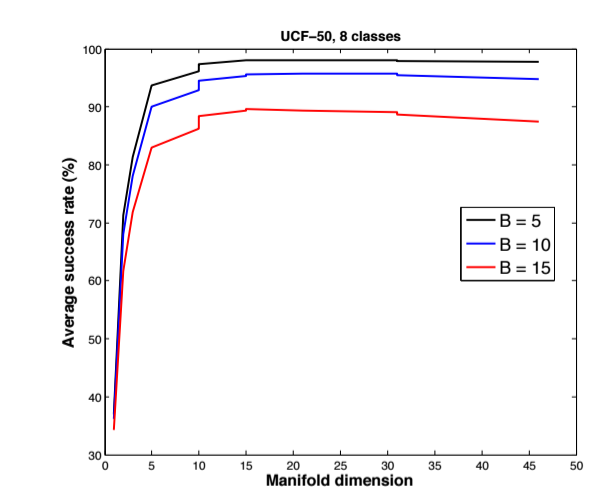| Authors: | G. Tzagkarakis, G. Tsagkatakis, J.-L. Starck, P. Tsakalides |
| Journal: | EUSIPCO |
| Year: | 2012 |
| Download: | IEEE |
Abstract
In this paper, we introduce an architecture for addressing the problem of video classification based on a set of compressed features, without the need of accessing the original full-resolution video data. In particular, the video frames are acquired directly in a compressed domain by means of random projections associated with a set of compressive measurements. This initial dimensionality reduction step is followed by distance metric learning for the construction of an informative distance matrix, which is then embedded in a manifold learning approach to increase the discriminative power of the random measurements in a lower-dimensional space. Classification results using a set of activity videos suggest that the proposed approach can be used effectively in cases when the acquisition and processing of full-resolution video data is characterized by increased consumption of the available power, memory and bandwidth, which may impede the operation of systems with limited resources.

